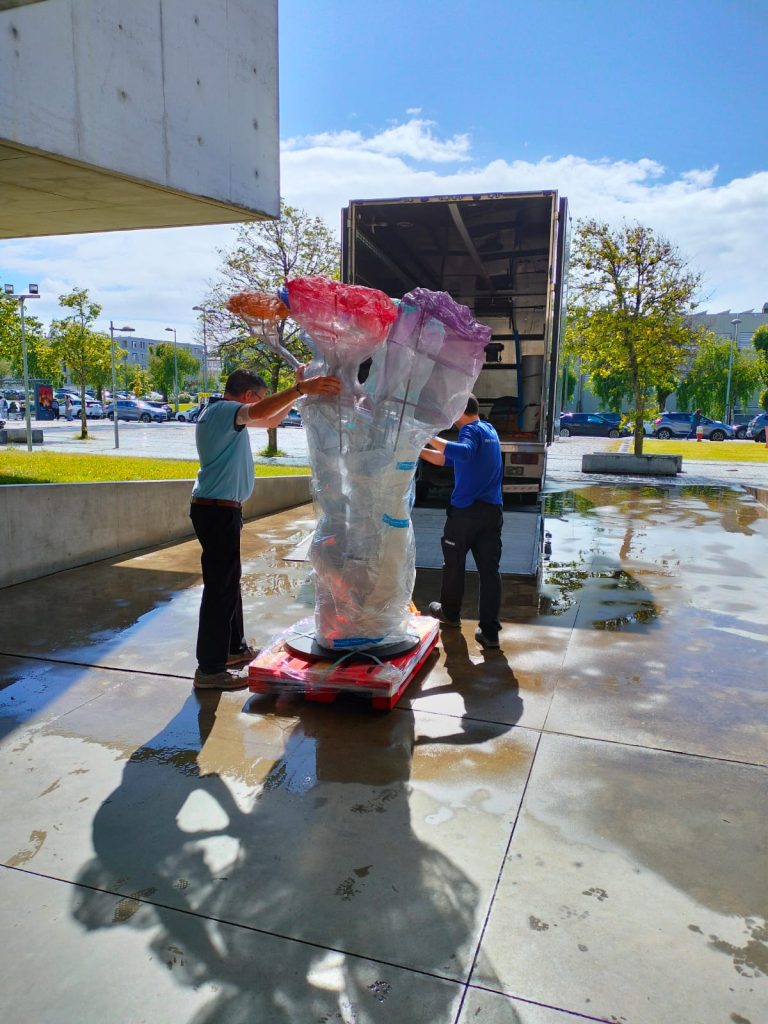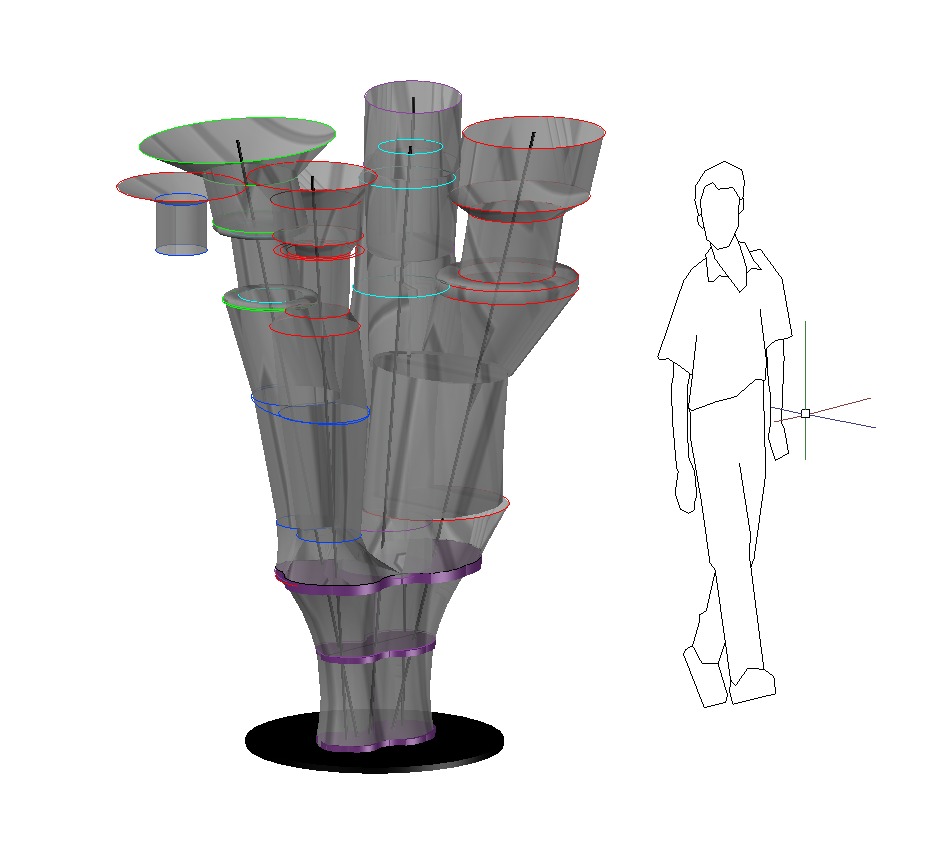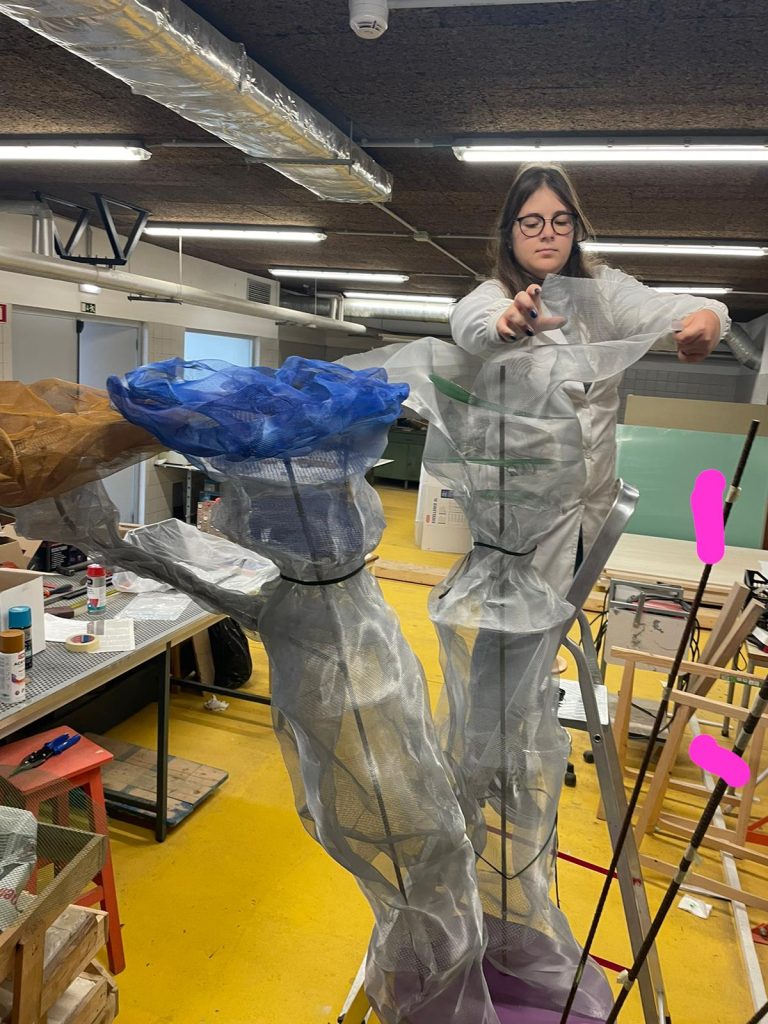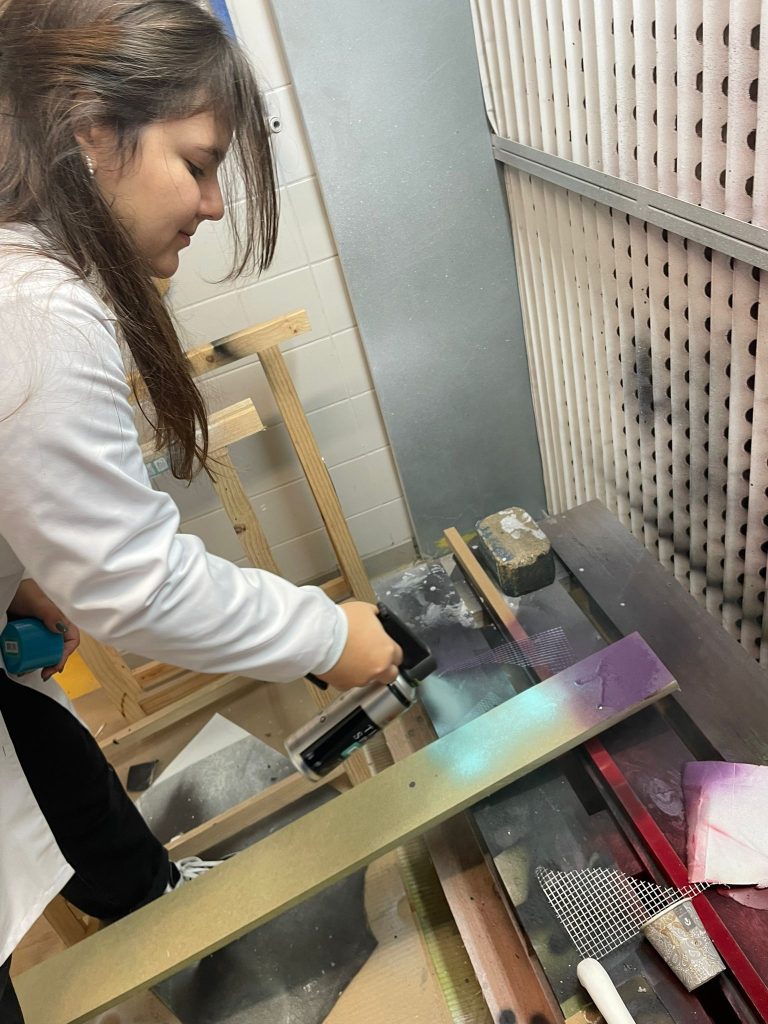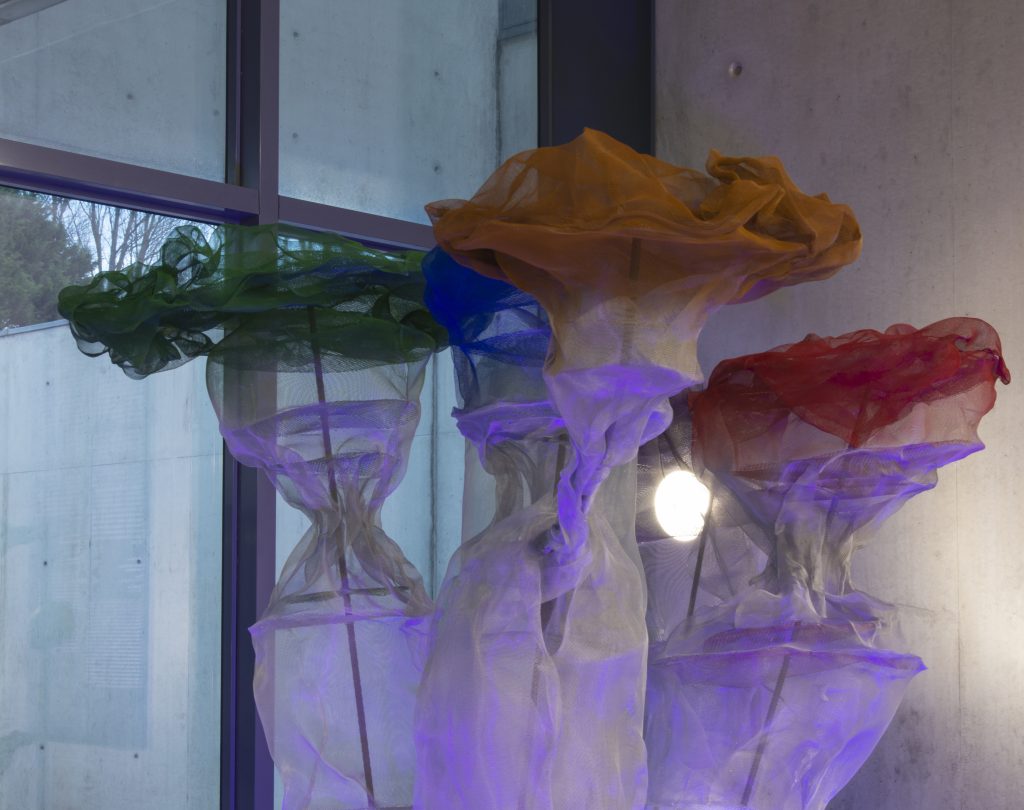Residency and co-production:
Population Diversity Tree
To explore specific themes, we invited some authors to an artistic residency, to plastically reinterpret scientific data, in close collaboration with the project team. One such work was developed by Cristina Lousada Soares, who holds a PhD in Product Design, she is a design professor and the coordinator of the Design course at the School of Media Arts and Design at the Polytechnic Institute of Porto.
Cristina Soares has created a plastic interpretation of the demographic model of human history (Homo sapiens) and of estimates of the divergence between the major population groups. The piece’s height represents around 300,000 years and, in proportion, the branches reflect the periods of population separation (genetic drift). The width of the arms corresponds to the population sizes and their implicit diversity. Between the different populations have been migrations that have given rise to miscegenations (genetic flows between populations) that are not represented in the piece.
As you can see in the images, the population branches are represented by different colours: all non-Africans, brown; East Africans, blue; West Africans, green; hunter-gatherers from central Africa, light blue; and Khoe-San populations, lilac and red (north and south respectively).
The construction of this piece was based on the schemes of Schlebusch et al., 2017 (DOI: 10.1126/science.aao6266) and Schlebusch and Jakobsson, 2018 (DOI: 10.1146/annurev-genom-083117-021759).
This tree also highlights “bottleneck effects” in three of the branches, as well as the “founding effect” in the formation of non-African populations. Comparatively, population diversity in Africa is much more significant than the sum of all other populations, due to the “founding effect” in the migration out of Africa.
The Diversity Tree will be presented at the Biennial Iberoamericana de Diseño, organised by the Fundación Diseño Madrid and is one of the design projects featured in the bienal’s website.
Author : Cristina Lousada Soares
Collaboration: Telma Oliveira

